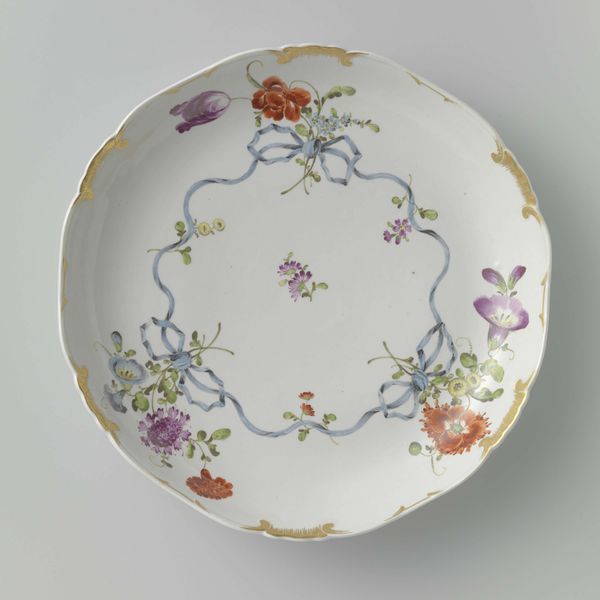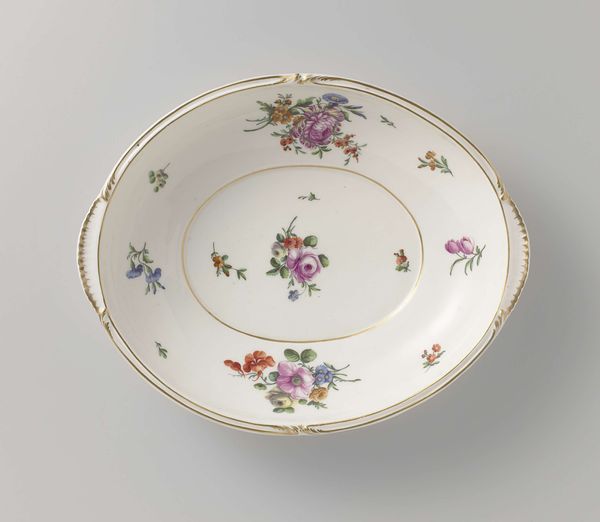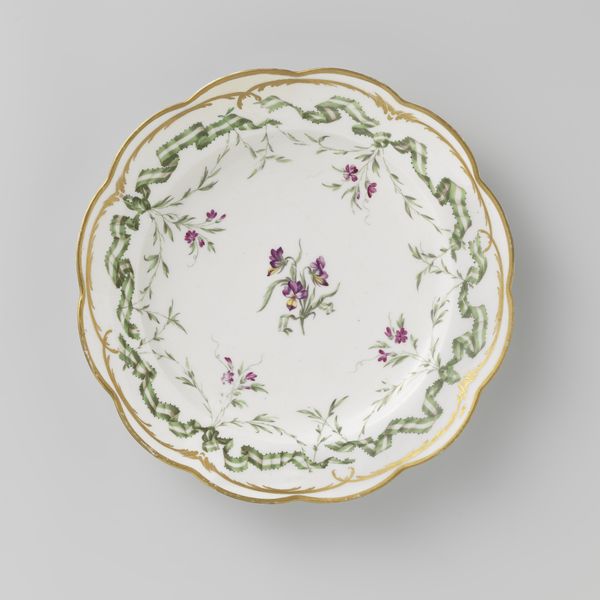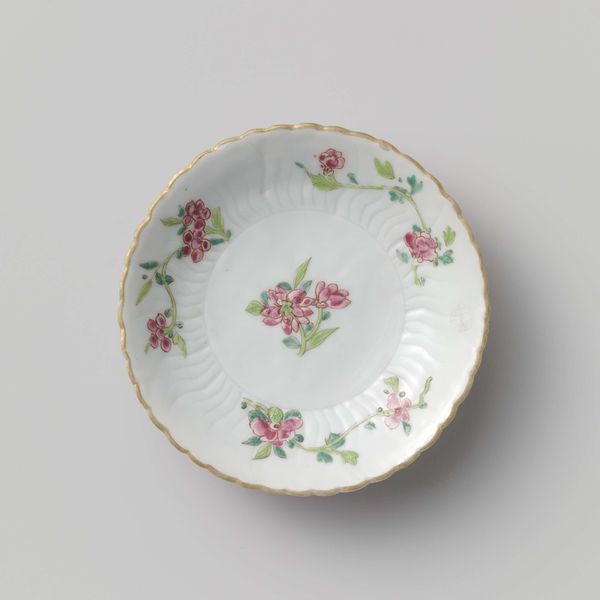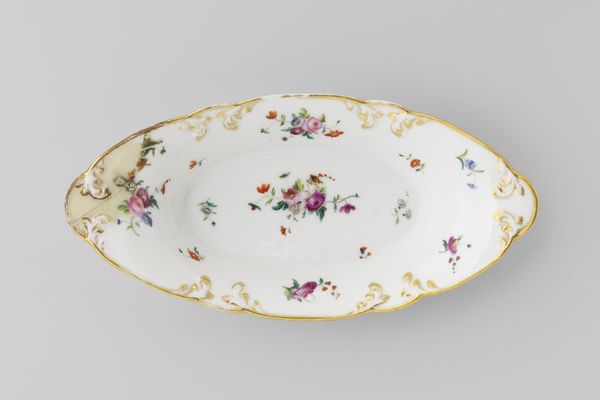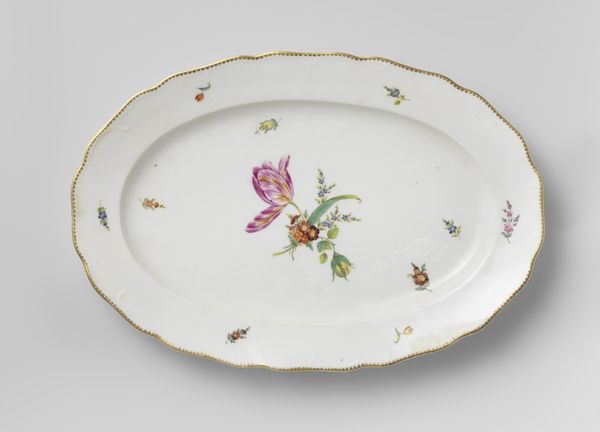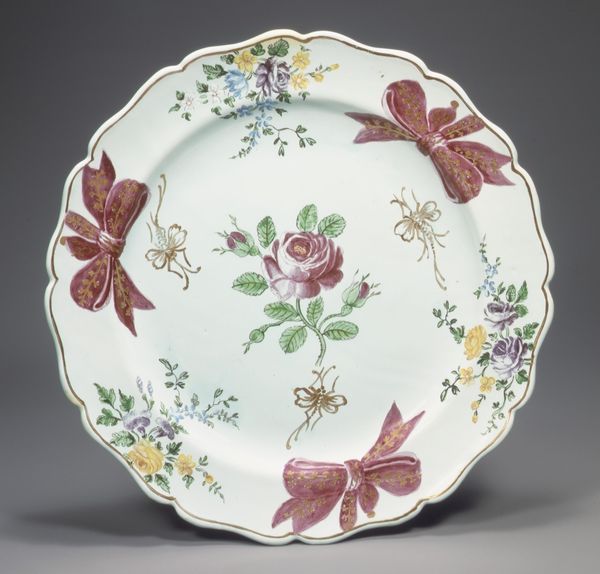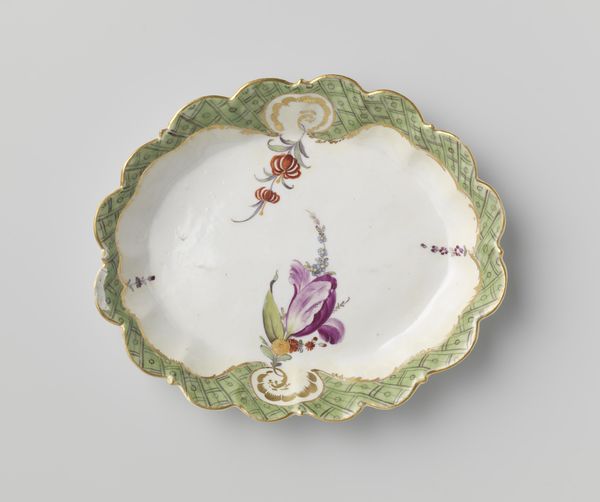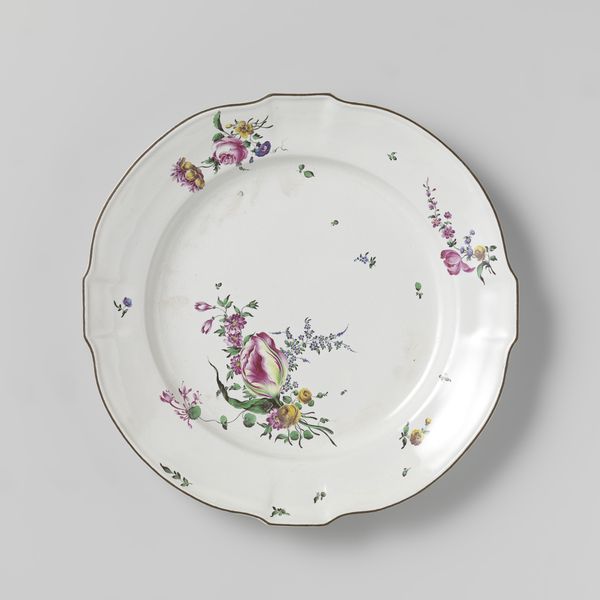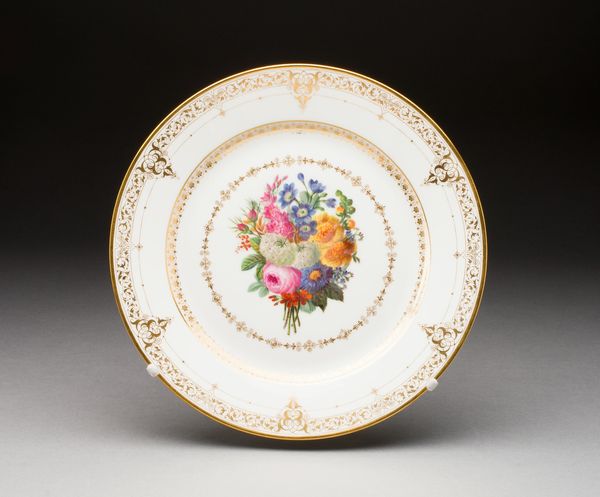
Suikervaas met deksel, beschilderd met een landschap met huizen c. 1809 - 1814
0:00
0:00
koninklijkeporseleinfabriekdommerco
Rijksmuseum
painting, ceramic
#
painting
#
landscape
#
ceramic
#
ceramic
#
genre-painting
Dimensions: height 7.8 cm, width 11.1 cm, depth 10.3 cm
Copyright: Rijks Museum: Open Domain
Editor: Here we have a sugar bowl with a lid, dating from about 1809 to 1814, made by the Koninklijke Porseleinfabriek Dommer & Co. The decoration is so delicate, almost like a miniature painting! What catches your eye when you look at this piece? Curator: What I find striking is the idealized landscape paired with what looks like genre scene. This sugar bowl offers a fascinating lens through which to view early 19th-century Dutch society and its relationship to land ownership and leisure. How might this romanticized vision of rural life contrast with the realities of the time? Editor: That’s an interesting point. It seems a bit naive perhaps? Almost like an advertisement. Curator: Precisely. Consider the implications of consuming sugar, a commodity inextricably linked to colonialism and slavery, from a vessel depicting such pastoral imagery. This bowl invites us to consider how aesthetics can function as a powerful form of ideological masking, obscuring the violent realities of economic production behind a facade of idyllic domesticity. The image naturalizes these brutal power dynamics and erases its traces from everyday life. Who benefits from it and how does it perpetuate a system that makes such inequities possible? Editor: So it’s not just a pretty picture on a bowl, but it speaks to much bigger social issues. Curator: Absolutely. This sugar bowl isn't merely a decorative object; it’s a potent artifact that reflects the complex interplay of class, colonialism, and visual representation in the Netherlands. Do you see how understanding these historical contexts can completely transform our reading of the artwork? Editor: I do. Thanks, this really opened my eyes! I never would have thought about all of that on my own. Curator: That's the power of art history, isn't it? It challenges us to look beyond the surface and uncover the layers of meaning embedded within.
Comments
No comments
Be the first to comment and join the conversation on the ultimate creative platform.


